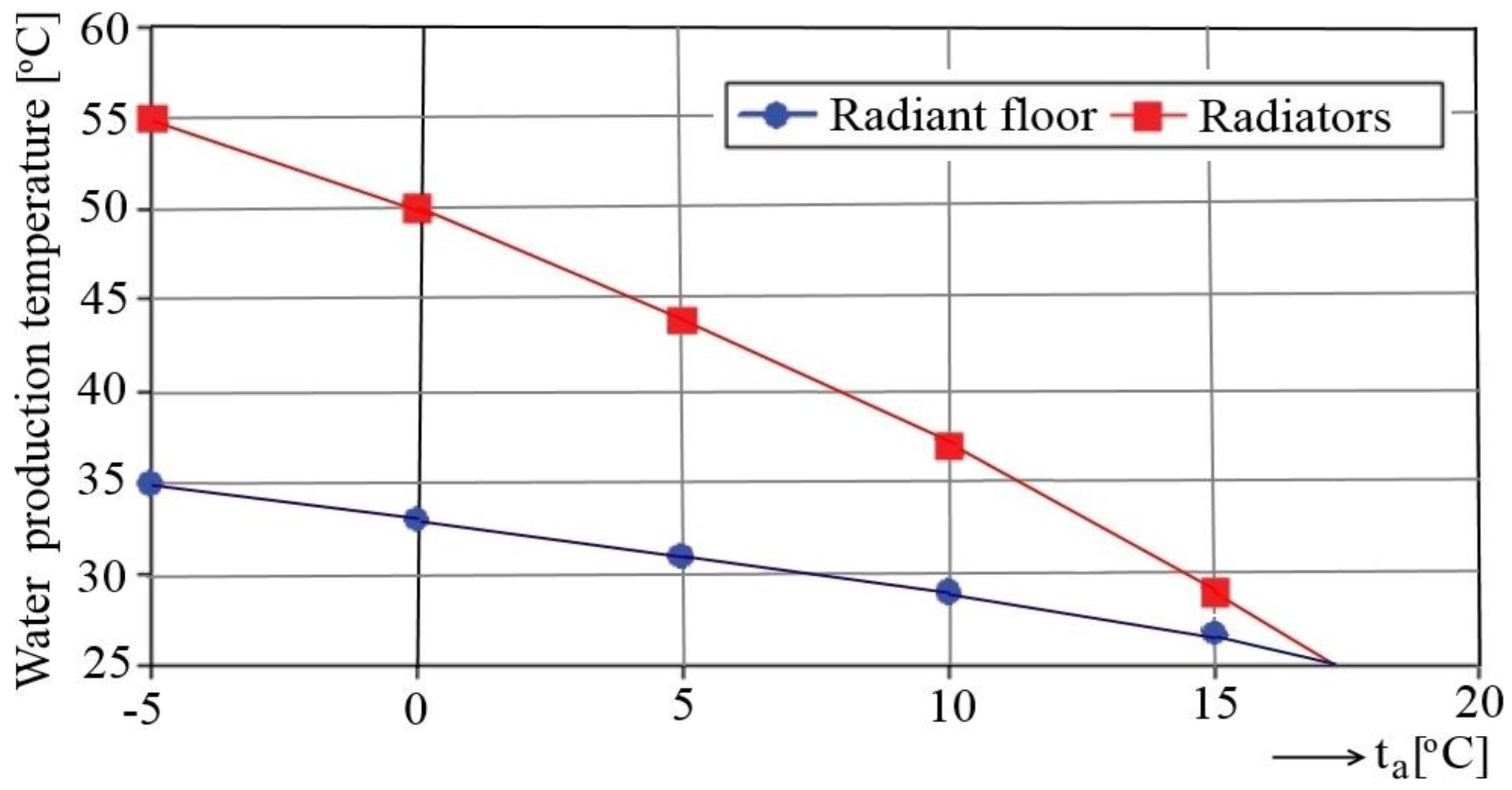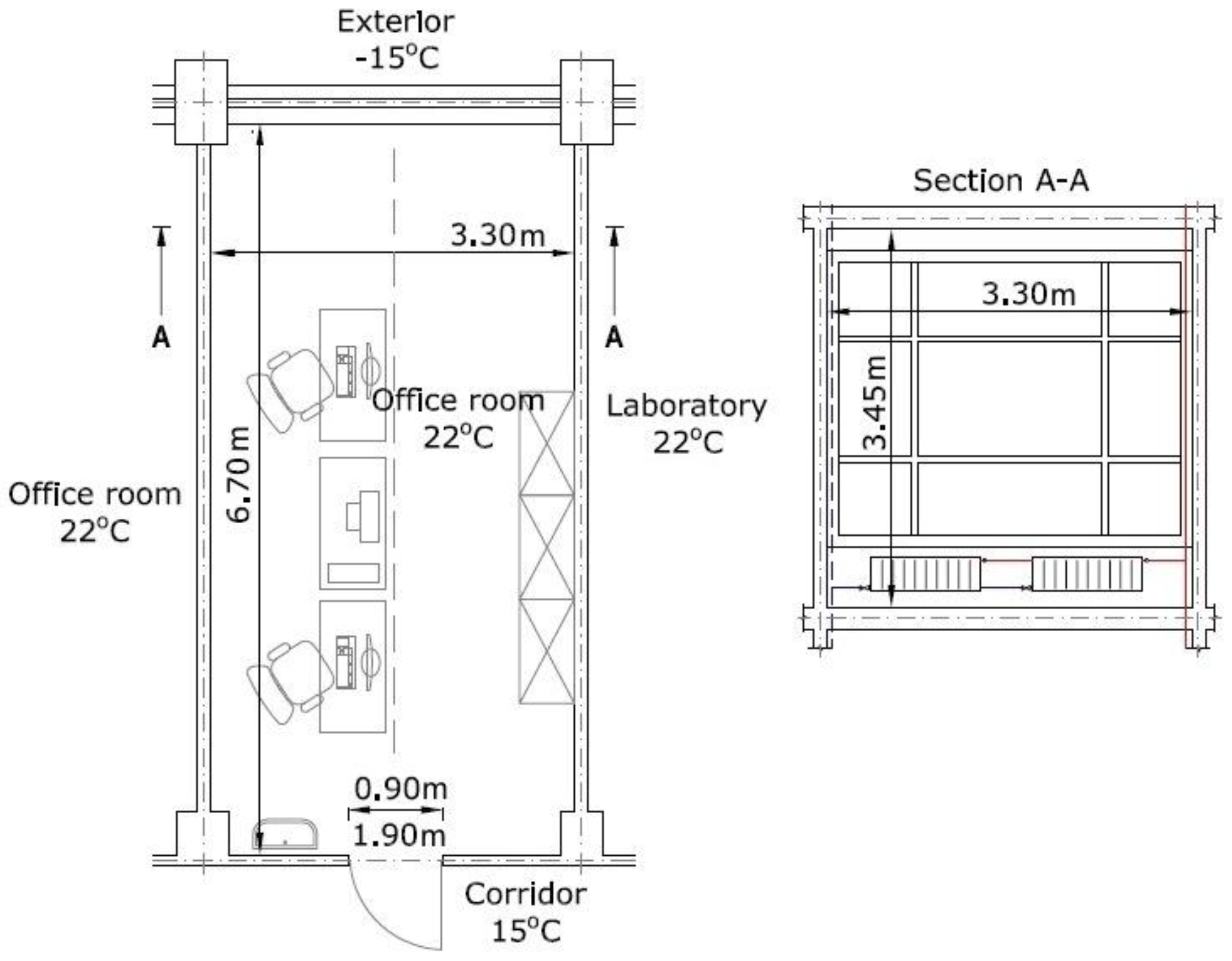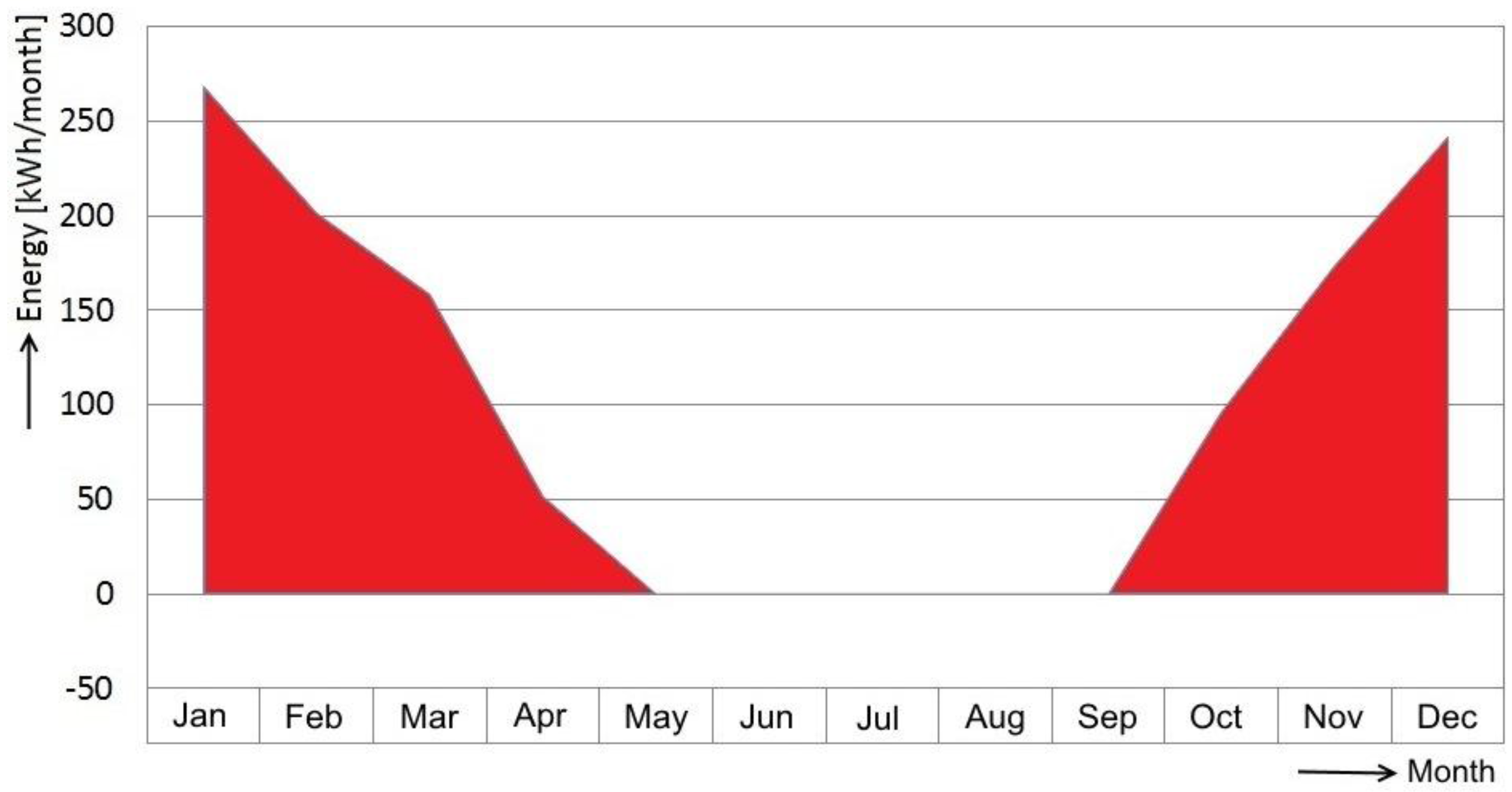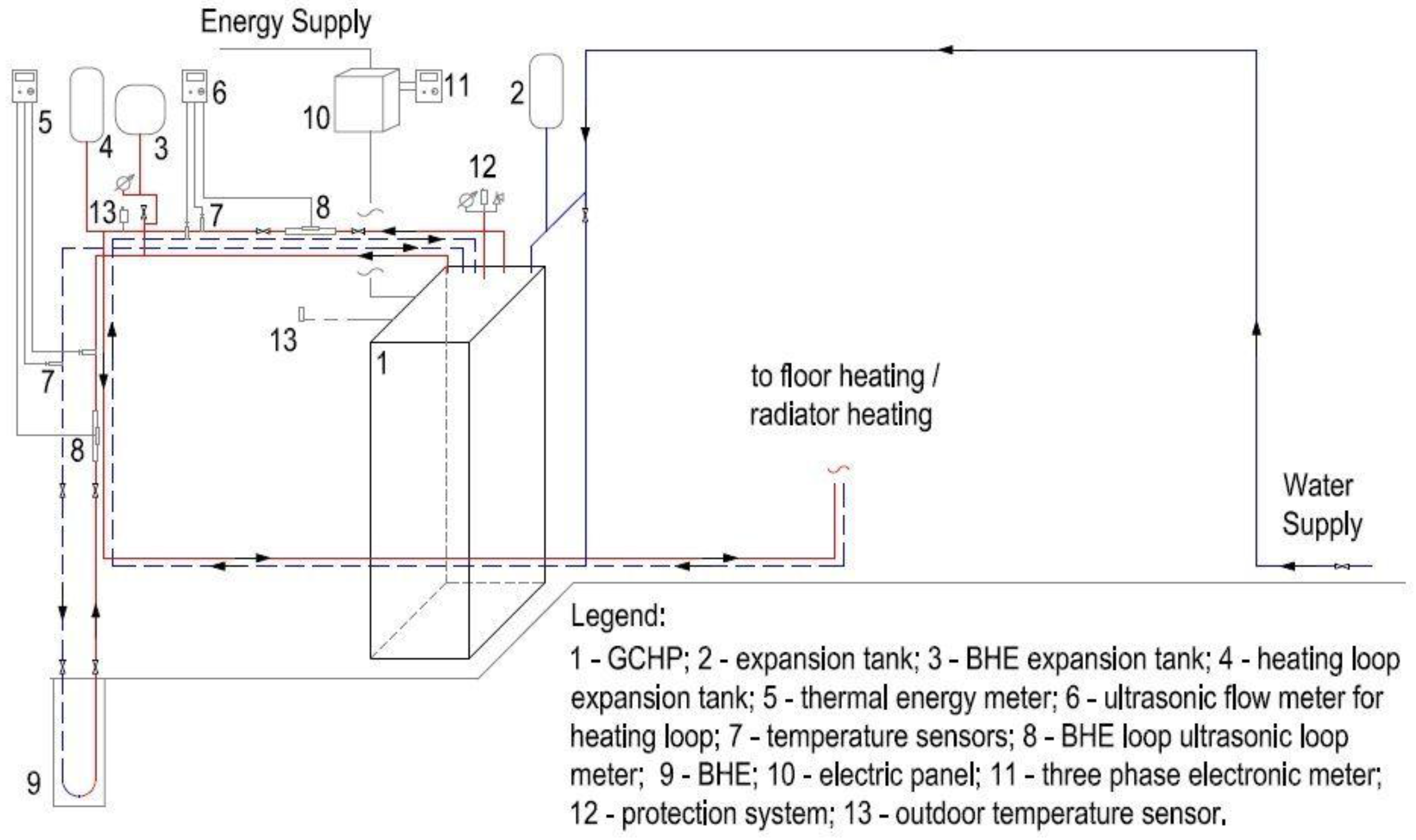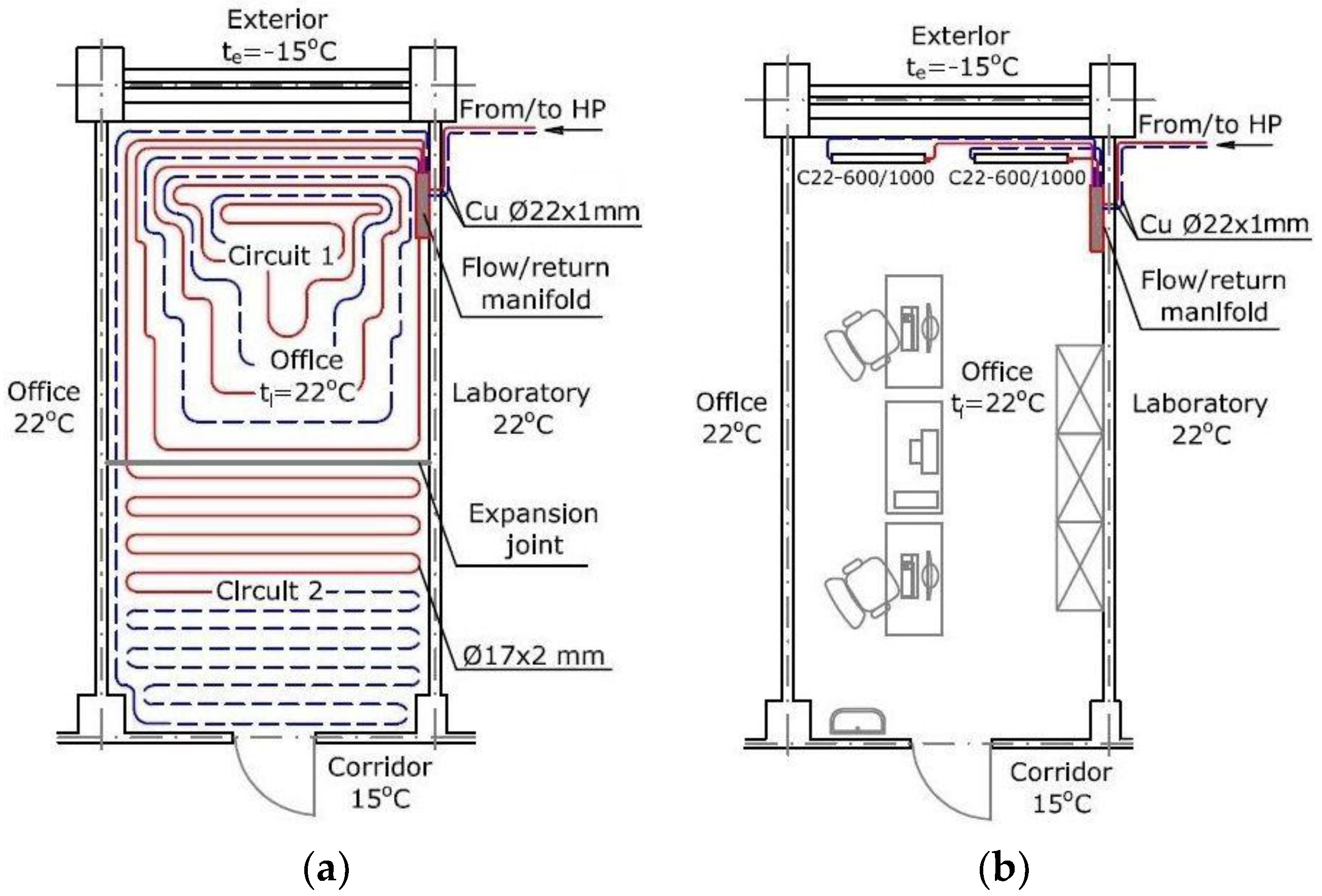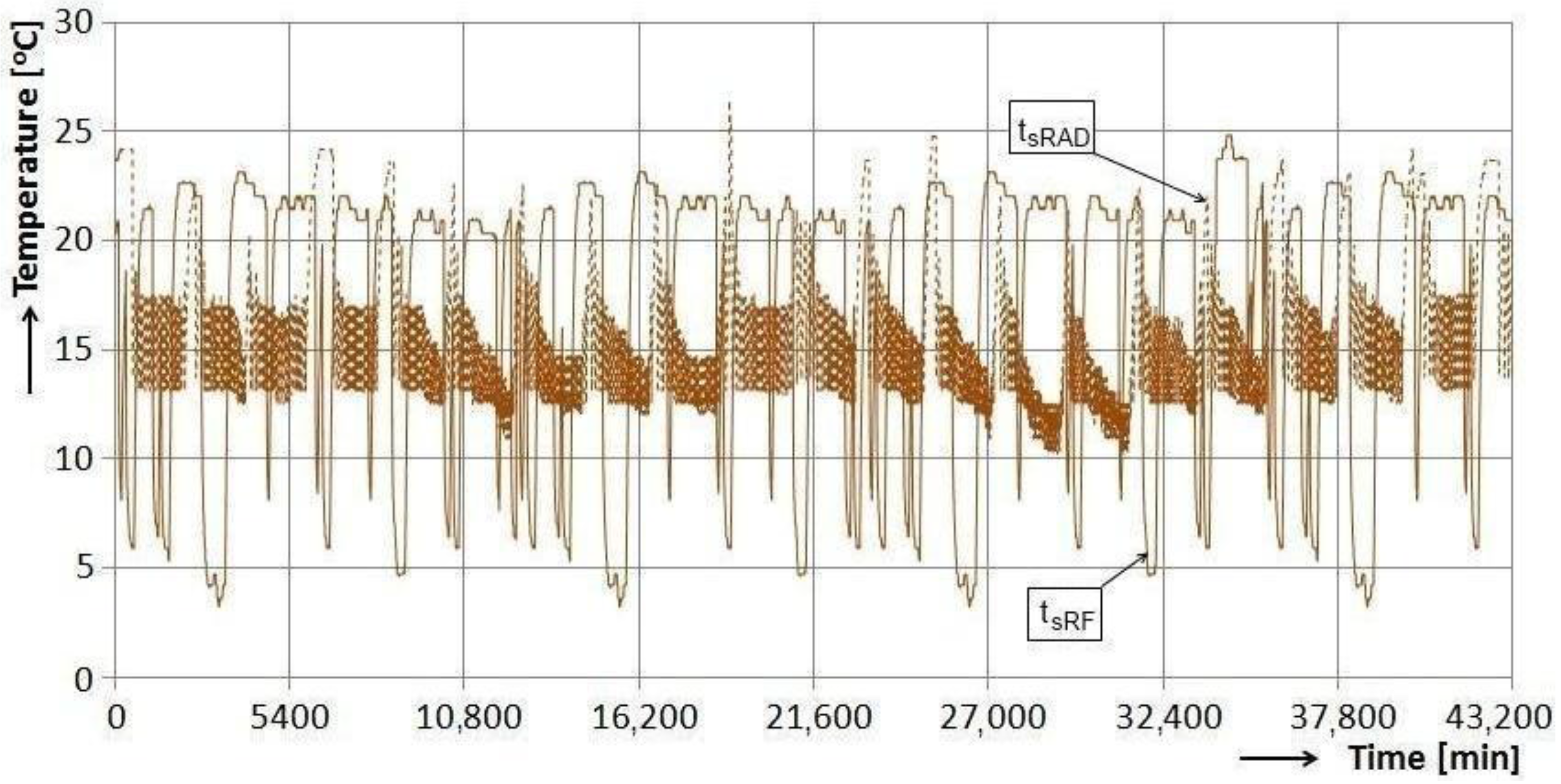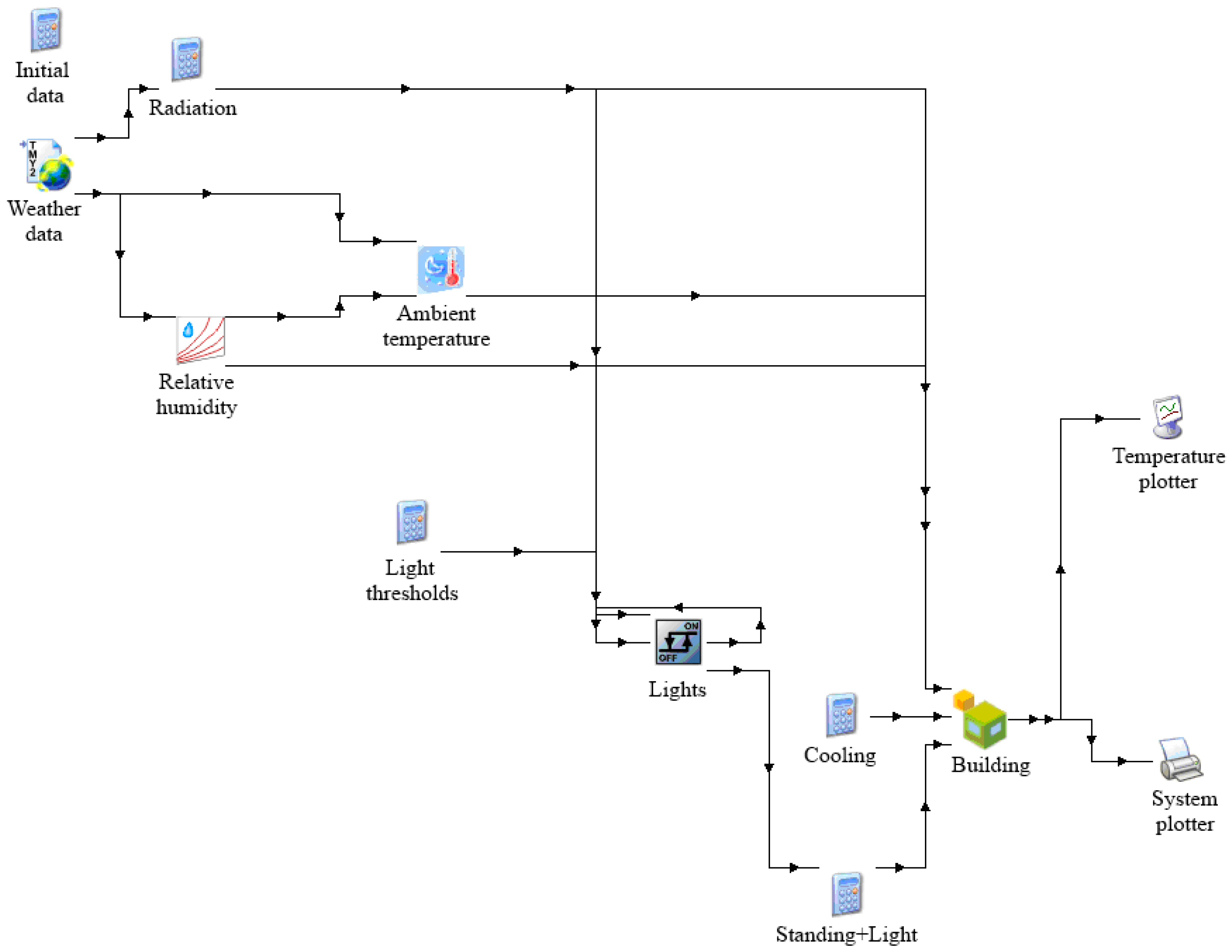1. Introduction
Buildings are indisputably considered as one of the largest energy consuming sectors. According to the International Energy Agency (IEA), the average energy consumed by buildings represents 32% of worldwide energy consumption. European Union (EU) energy consumption patterns reveal that buildings are the greatest energy consumer, using approximately 40% of the total energy demand, followed by industry and transportation, which consume approximately 30% each [
1]. Buildings offer the greatest and most cost-effective potential for energy savings. Studies have also shown that saving energy is the most cost-effective method for reducing greenhouse gas (GHG) emissions.
Some actions are being performed to reduce energy consumption and to protect the environment (e.g., the use of renewable energies for new or retroffited buildings and passive energy buildings). EU member states must stimulate the transformation of existing buildings undergoing renovation into nearly zero-energy buildings (nZEBs). Conversion of heating and cooling systems based to ground-source heat pumps and air-to-water heat pumps (HPs) is a well-proven measure to approach nZEB requirements.
To realise the ambitious goals for reducing the consumption of fossil fuel as primary energy and the related carbon dioxide (CO
2) emissions, and to reach the targets of the Kyoto Protocol, improved energy efficiency and the use of renewable energy in the existing building stock must be addressed in the near future [
2].
The Renewable Energy Directive 2009/28/EC of the European Parliament recognised aerothermal, geothermal and hydrothermal energy as renewable energy sources (RES) for the first time. This directive opens up a major opportunity for further use of HPs for heating and cooling of new and existing buildings [
3].
Ground-coupled heat pump (GCHP) systems are a type of renewable energy technology which has been increasingly used in the past decade across Europe to provide air-conditioning and domestic hot water (DHW) for buildings [
4,
5]. These systems can achieve higher energy efficiency compared to air-source HP systems because the soil can provide a higher temperature for heating and lower temperature for cooling than air [
6]. A number of GCHP systems have been used in residential and commercial buildings worldwide because of their noticeable high efficiency and environmental friendliness [
6,
7,
8]. The use of GCHPs in the achievement of adequate temperatures has been studied by several researchers [
9,
10,
11].
Most existing studies on GCHP systems concentrate on theoretical and simulation model research [
12,
13,
14,
15,
16] or
in situ monitoring of the heat transfer in borehole heat exchanger (BHE) [
17,
18,
19]. Only a few researchers have investigated the experimental operation performance of GCHP systems. Pulat
et al. [
20] evaluated the performance of a GCHP with a horizontal ground heat exchanger (GHE) installed in Turkey under winter climatic conditions. Yang
et al. [
21] reported the heat transfer of a two-region vertical U-tube GHE after an experiment performed in a solar geothermal multifunctional HP experimental system. Lee
et al. [
22] conducted experiments on the thermal performance of a GCHP integrated into a building foundation in summer. Man
et al. [
23] performed an
in situ operation performance test of a GCHP system for cooling and heating provision in a temperate zone. The experimental results indicate that the performance of the GCHP system is affected by its intermittent or continuous operation modes. Petit and Meyer [
24] compared the thermal performance of a GCHP with an air-source air conditioner, finding that a horizontal or vertical GCHP was more favourable in terms of economic feasibility. Esen and Inalli [
25] proposed using the
in situ thermal response test to determine the thermal property of the ground for the GCHP applications in Turkey.
Currently, heating is responsible for almost 80% of the energy demand in houses and utility buildings, used for the purpose of space heating and DHW generation.
The widespread distribution of HPs as single generators in heating systems has mainly been in new, rather isolated buildings that have limited unit loads. This has enabled the use of low-temperature terminal units, such as fan coil units and, in particular, radiant systems [
26]. After the introduction of plastic piping, the application of water-based radiant heating and cooling with pipes embedded in room surfaces (
i.e., floors, walls and ceilings), has significantly increased worldwide. However, to extend the use of these types of heat generators and to benefit from their energy efficiency, working with radiators, which were the most commonly used terminal units in heating systems in the past, is necessary.
This paper discusses vapour compression-based HP systems briefly describing the calculation of the corresponding thermodynamic cycle, as well as the coefficient of performance (COP) and CO2 emissions of a HP with electro-compressor and compares different heating systems in terms of energy consumption, thermal comfort and environmental impact. It is focused of an experimental study performed to test the energy efficiency of the radiator or radiant floor heating system for an office room connected to a GCHP. The main performance parameters (COP and CO2 emissions) are obtained for one month of operation of the GCHP system, and a comparative analysis of these parameters is achieved. Simulations of useful thermal energy and the system COP in heating mode with Transient Systems Simulation (TRNSYS) software are finally performed along 8760 h using Meteonorm weather data and compared to experimental measurements to validate the simulation models.
6. Conclusions
The use of heat pumps in modern buildings with improved thermal insulation and reduced thermal load is a good alternative to traditional heating solutions. This study showed that radiator heating and radiant floor heating systems have small differences (4.5%) in their energy performance coefficient (COPsys) value, but the on/off switching in the case of radiator heating system is almost three times higher than that for radiant floor heating system, leading to higher wear on the HP equipment. In addition, the radiator heating system showed 10% higher energy consumption and CO2 emission compared to the floor heating system under the same operating conditions, which also provided good thermal comfort.
From the radiator selection point of view, design temperatures of 45/35 °C are more useful than 50/30 °C because of higher excess temperature (logarithmic mean temperature difference). Design water temperatures 45/35 °C also provide a good common basis for a combined heating system using radiators as primary heat emitters and floor heating in rooms where higher floor temperatures are preferred (e.g., bathrooms) [
47]. In well-insulated buildings, a floor heating system is recommended over a radiator heating system if a heat pump is used as the energy source.
The developed TRNSYS simulation models can be used as a tool to determine the GCHP performance connected with different heating systems to optimise theirs energy efficiency and ensure the user’s comfort throughout the year. This study can provide a practical reference for the design of similar GCHP system in residential buildings. More detailed experimental and numerical information will be presented in later studies.

